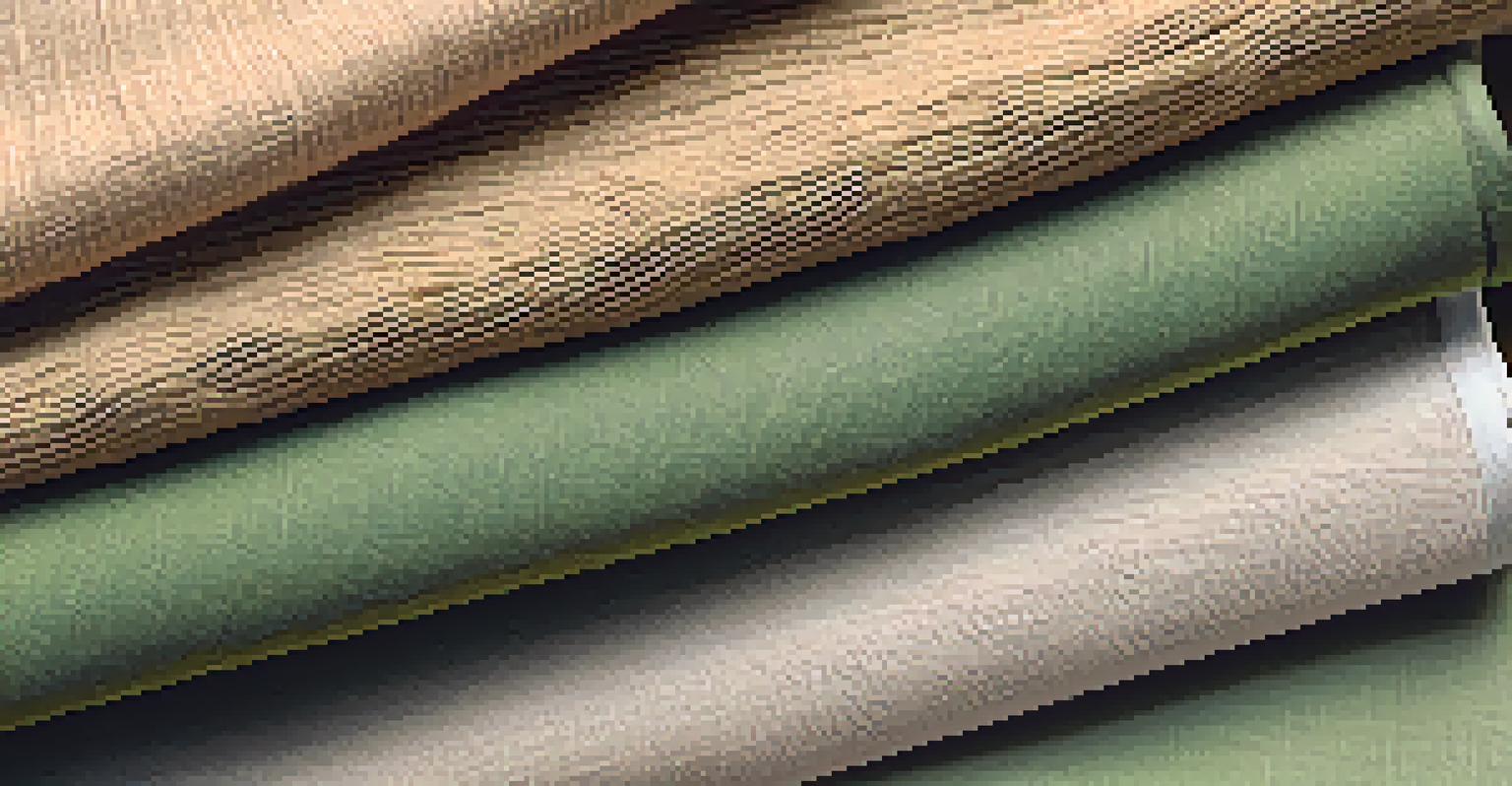Sustainable Activewear: Eco-Friendly Choices for Mobility

Understanding Sustainable Activewear and Its Importance
Sustainable activewear is designed not just for performance, but also for the planet. It includes clothing made from eco-friendly materials like organic cotton and recycled polyester. These materials reduce the environmental impact of production and help mitigate waste in our landfills.
The greatest threat to our planet is the belief that someone else will save it.
Choosing sustainable activewear is crucial in today’s fashion landscape, where the industry is one of the largest polluters. By opting for eco-friendly options, consumers can make a significant impact on reducing carbon footprints. This shift towards sustainability reflects a growing awareness of our collective responsibility for the environment.
Moreover, sustainable activewear often prioritizes ethical labor practices, ensuring that the people who create our clothes are treated fairly. This not only contributes to a better planet but also supports a more just economy, making your fitness journey feel even more meaningful.
Materials That Make a Difference in Activewear
When it comes to sustainable activewear, the materials used are key. Fabrics like Tencel, made from sustainably sourced wood pulp, offer breathability and moisture-wicking properties. Additionally, recycled materials, such as PET from plastic bottles, help reduce waste and promote a circular economy.

Organic cotton is another popular choice, as it’s grown without harmful pesticides or fertilizers, making it better for both the environment and the wearer's skin. Hemp is also gaining traction due to its durability and low environmental impact, providing a sturdy option for activewear enthusiasts.
Sustainable Activewear Benefits
Choosing sustainable activewear not only benefits the planet through eco-friendly materials but also supports ethical labor practices.
By choosing garments made from these materials, consumers can enjoy high-performance wear without compromising on their eco-friendly values. It's a win-win situation where you can feel good about both your workout and your contribution to sustainability.
The Role of Certifications in Eco-Friendly Activewear
Navigating the world of sustainable fashion can be tricky, but certifications can help guide your choices. Look for labels like GOTS (Global Organic Textile Standard) or OEKO-TEX, which ensure that the materials used meet stringent environmental and social criteria. These certifications provide transparency, giving consumers confidence in their purchases.
Sustainability is no longer about doing less harm. It’s about doing more good.
Brands that carry such certifications often prioritize ethical practices throughout their supply chain, from sourcing materials to labor conditions. This means that when you buy from these companies, you’re not just investing in quality activewear; you’re also supporting a more sustainable and fair fashion industry.
Understanding these certifications helps you make informed decisions, ensuring that your activewear aligns with your values. It empowers you to choose products that contribute positively to the environment and society.
Brands Leading the Charge in Sustainable Activewear
Several brands have emerged as leaders in the sustainable activewear space, each with unique approaches. For example, Patagonia is renowned for its commitment to the environment, using recycled materials and offering repair services to extend the life of its products. Their mission not only focuses on selling but also on educating consumers about sustainability.
Another standout is Girlfriend Collective, a brand that produces activewear from recycled water bottles and offers a size-inclusive range. Their transparency about the production process and commitment to sustainability resonate well with eco-conscious consumers looking for stylish options that don’t sacrifice quality.
Importance of Eco-Friendly Materials
Materials like Tencel and recycled polyester are crucial for sustainable activewear, offering both performance and reduced environmental impact.
These brands exemplify how businesses can successfully merge style, performance, and sustainability. By supporting such companies, you’re not just making a purchase; you’re joining a movement towards a more responsible fashion industry.
Eco-Friendly Practices Beyond Materials
The journey to sustainable activewear goes beyond just the materials used; it also encompasses the practices employed by brands. Many companies are adopting eco-friendly production processes, reducing water usage, and minimizing energy consumption during manufacturing. This holistic approach is vital for truly sustainable fashion.
Additionally, brands are increasingly focusing on packaging sustainability, opting for recyclable or compostable materials instead of plastic. This small change can significantly reduce waste and contribute to a healthier planet, aligning with the values of eco-conscious consumers.
By supporting brands that prioritize these practices, you encourage a shift in the industry toward more sustainable methodologies. It's about making choices that benefit not just you but the environment as well.
Caring for Your Sustainable Activewear
Taking care of your sustainable activewear is essential for extending its lifespan and ensuring it remains eco-friendly. Simple practices like washing in cold water and air-drying can significantly reduce energy consumption. Avoiding harsh detergents can also help maintain the integrity of the materials.
Regular maintenance, such as repairing small tears or replacing worn-out parts, can keep your clothing functional for longer. This not only saves you money but also reduces the need to frequently purchase new items, which contributes to waste.
Future of Sustainable Fashion
The future of sustainable activewear is bright, with increasing consumer demand driving innovations and ethical practices in the industry.
By treating your sustainable activewear with care, you can enjoy its benefits while minimizing your environmental impact. It’s a small but impactful way to contribute to sustainability in your everyday life.
The Future of Sustainable Activewear
The future of sustainable activewear looks promising as more consumers demand eco-friendly options. Innovations in fabric technology are emerging, with companies researching new materials that are both sustainable and high-performing. This evolution is paving the way for a more diverse range of products that meet the needs of all types of athletes.
Moreover, as awareness grows, brands are likely to increase transparency and ethical practices, further reinforcing the importance of sustainability in fashion. Collaborations between brands and environmental organizations may also become more common, amplifying the impact of sustainable initiatives.

Ultimately, the shift towards sustainable activewear is not just a trend; it’s a movement towards a more responsible future. By embracing this change, consumers and brands alike can work together to create a healthier planet for generations to come.